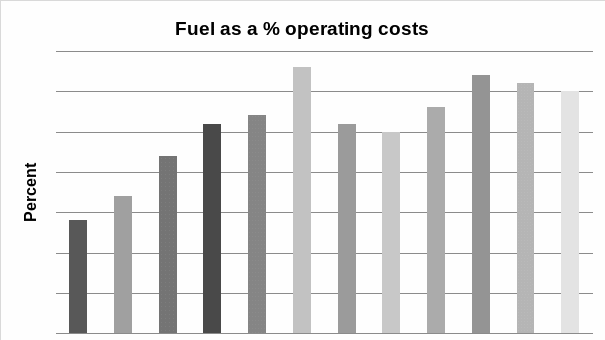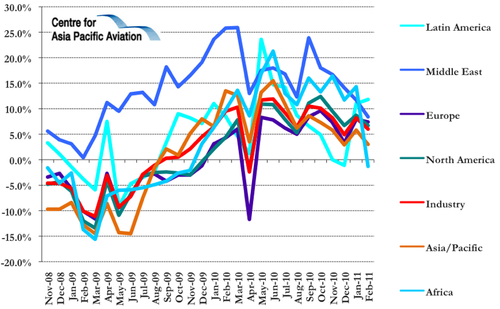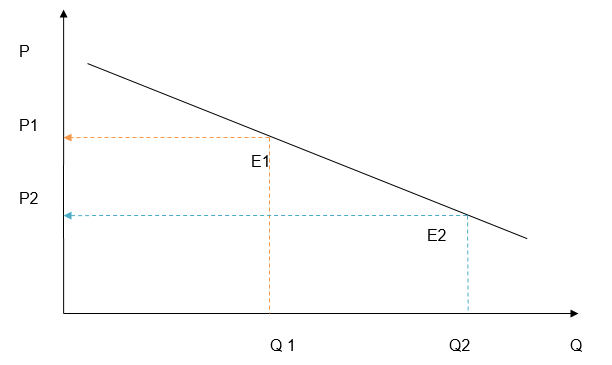Introduction
Background information
Both domestic and international airline companies dominate the airline industry in the UAE. The industry plays an important role in the UAE’s economic growth. The sector generates over AED 32 billion, which represents 26% of the UAE’s Gross Domestic Product [GDP]. The industry creates approximately AED $13.5 billion directly through various components of the sectors, viz. the ground services, airlines, and airports.
Furthermore, the sector contributes AED 11.0 billion indirectly through consumption within the aviation industry’s supply chain while AED 43.7 billion is generated from tourists who use the airlines as their form of transport. In addition to the above factors, the industry has continued to support the economy by creating employment to over 312,000 Emiratis. Over 65,000 jobs are supported by the industry’s supply chain. Furthermore, the industry has led to the employment of over 495,000 individuals through its catalytic effect on the tourism sector (CAPA Centre for Aviation 2012).
The industry has been characterised by numerous changes and upheavals over the past decade. The liberalisation of the airline industry, the entry of the low-cost airlines, and the 2008/2009 global economic recession are some of the issues that have characterised the industry during the 1st decade of the 21st century. Virgin Australia is one example of the low cost airlines that have ventured into the UAE airline industry. Considering the aforementioned industry trends, most industry players are undertaking policy changes in an effort to remain competitive. Subsequently, the industry has continued to experience remarkable growth over the past decade. For example, the total number of passengers carried through the country’s airline industry increased from 56.71 million to 57.69 million between 2013 and 2014, which represents a 1.7% growth (CAPA Centre for Aviation 2012).
Aim
In a bid to remain competitive in the global aviation industry, it is imperative for firms in the UAE’s aviation industry to improve their competitive edge. One of the aspects that the firms should take into account relates to supply chain management. This report evaluates the role of supply chain in improving the ability of airline companies to survive during the second half of the 21st century.
History of supply chain development
Supply chain refers to a global network that is comprised of diverse stakeholders and organisations. The objective of supply chain is to enhance cooperation and flow of information and materials amongst various stakeholders. The supply chain is comprised of three main components, which include direct supply chain, extended supply chain, and ultimate supply chain (Cohen & Roussel 2005).
The direct supply chain includes the organisation, its customers, and suppliers who are involved in downstream and upstream flow of information and materials. On the other hand, the extended supply chain is comprised of business partners of the intermediate supplier. The ultimate supply chain is comprised of all organisations within the downstream and upstream flows. This definition shows that supply chain aims at promoting end-to-end flow of information, materials, and information (Horch 2009). Horch (2009) further argues that supply chain contributes to the achievement of strategic competitive advantage.
Air transport plays a key role in transforming the world. For example, the industry provides rapid connections between different parts of the world, hence increasing the rate of globalisation and development of new experiences amongst individuals and businesses. Despite its significance in the global economic growth, the industry has faced challenges arising from the recent global economic recession. The global recession affected the effectiveness of various links within the supply chain.
The slow recovery of most economies from the adverse effects of the recession has affected the competitiveness of airline companies. Most airline companies are struggling to recover their competitiveness by increasing their passenger flows. Airline companies are increasingly redefining their supply chain management strategy in an effort to improve their performance. The core motive of redefining their supply chain management is to enhance collaboration amongst the various business partners and eliminate bottlenecks in the supply chain, hence attaining a high level of operational efficiency. Furthermore, supply chain management enables airline companies to attain competitive advantage.
The aviation supply chains are facing challenges arising from the need to adopt cost-cutting measures coupled by the low demand for traffic. The effectiveness of traditional supply chain-management strategies such as aggressive outsourcing bids have led to a reduction in the airlines’ maintenance, repair, and overhaul [MRO]. The recent global financial crisis has continued to test the effectiveness of the business models such as the supply chain adopted by different organisations. However, such challenges present businesses with an opportunity to improve their operations (Whyte, Prideaux & Sakata 2012).
Challenges faced by the UAE airline industry over the years
The global airline industry is comprised of over 2000 airline companies, which operate over 24,000 commercial aircrafts. Furthermore, an elaborate network of over 3,700 airports supports the industry. The industry has undergone remarkable growth over the past two decades as evidenced by the increase in the number of passengers carried by the various airline companies. The UAE aviation industry operates in an environment that is shaped by diverse market forces, some of which are beyond the control of the respective management teams. Some of the challenges that have continued to shape the industry over the past years include terrorism, technological development, financial crises, fuel crises, and climate change (Belobaba, Odoni & Barnhart 2009).
Security threat
Security has continued to be a major challenge in the aviation industry over the past decades. The security threat on the aviation industry has been increased by the emergence of different terrorist organisations around the world. These terror networks pose a threat to the long-term performance of airline companies such as Emirates. Some of the most notable cases of the aviation security include the bombing of an aircraft above Lockerbie in 1988 and the 9/11 bombing in the US.
The industry continues to be an appealing target for terrorists due to its enormous contribution to a country’s economic growth, both at the micro and macro levels. Stakeholders within the airline industry have an obligation to ensure the safety and wellbeing of their passengers, which is a challenging task.
One of the areas that the airline companies should take into account relates to cargo security, which is increasingly considered as a ‘loose end’. Airline companies have implemented diverse measures such as adequate technologies in an effort to ensure that cargo is adequately screened just as passengers. Furthermore, it is important for airline companies to understand emerging terror threats such as sabotage on the aircrafts and other systems (Cohen & Roussel 2005).
Fuel crisis
High jet fuel has been a major challenge in the airline companies’ efforts to achieve long-term success over the past decade. The UAE Airline industry has not been shielded from the high fuel prices, which caused havoc during the first decade of the 21st century. Fuel ranks as one of the major costs in the airline industry. The total fuel expense in the global airline industry amounted to $ 215 billion in the 2013 financial year, which accounts for 31% of the industry’s total operating expense (International Air Transport Association 2014).
The high fuel cost has led to a significant reduction in the industry’s profits. A report published by the International Air Transport Association (2014) showed that the industry’s profit declined with a margin of 62% in 2012. The chart below illustrates the trend with regard to the jet fuel prices as a proportion of the industry’s total operating costs. The chart shows that fuel cost has continued to be a major challenge.

Financial crisis
The global airline industry was adversely affected by the 2008/2009 global economic recession. A majority of air transport companies experienced a significant decline in the level of their profitability. The crisis increased the cost of operations by most airline companies. Subsequently, airline companies adopted diverse cost management strategies such as job-reduction programmes and adjustment on the organisations’ working conditions.
Air France-KLM and Aer Lingus are some of the carriers that announced their intention to undertake job cuts. On the extreme, some carriers exited the industry due to the adverse effects of the crisis. For example, XL Airways, which operates in the UK aviation industry, ceased its operations. Subsequently, the crisis led to massive job losses. Some companies such as Virgin, Singapore Airlines, and British Airways implemented pay freezes. These companies sent employees on leave without pay. For example, Cathay Pacific encouraged its 17,000 employees to take leaves of up to one month without pay.
Furthermore, the crisis led to a significant reduction in the consumers’ purchasing power. Subsequently, the industry has experienced fluctuations in revenue passenger kilometre as illustrated by the graph below.

Success factors
Aligning supply chain with strategy
Supply chains are an important component in an organisation’s efforts to create sufficient capabilities, hence attaining the desired competitive edge. Supply chains do not operate in seclusion. Therefore, the supply chain adopted by an organisation must align with the set corporate and business level strategies. The supply chain must support the strategic goals adopted by an organisation. Furthermore, the supply chain must be integrated in the corporate systems (Cohen & Roussel 2005). Prior to designing their supply chain, it is imperative for organisations to ensure that it is connected with their corporate landscape. Failure to align the supply chain with the corporate strategy may affect an organisation’s ability to attain competitive advantage adversely. Failure to align supply chain with strategy may lead to inefficient and poor operations, hence leading to low returns.
The UAE’s airline industry has integrated customer satisfaction as one of its business strategies. In a bid to achieve this goal, the firms have integrated catering as one of their corporate level strategies. Subsequently, the firms have integrated a comprehensive supply chain in an effort to ensure that food products supplied to the firm are of high quality. The companies’ supply chains have played an essential role in promoting the firms’ ability to satisfy their customers.
End to end process architecture
Firms in the global airline industry are experiencing a significant reduction in the level of their profitability. Despite this aspect, customer expectations have increased significantly over the past few years. Consequently, it is imperative for companies in the airline industry to implement effective measures to meet the customers’ expectations. One of the aspects that airline companies should take into account relates to in-flight catering. The airline companies should ensure that they adopt an effective end-to-end operation strategy in order to improve their in-flight catering system.
In line with its commitment to nurturing a high level of customer satisfaction, the UAE airline industry has developed a comprehensive in-flight catering system. The airlines’ management teams are focused on minimising wastage and adding value within the airlines’ catering system. Furthermore, the airlines have committed to developing an efficient catering system. Subsequently, the firms obtain the right raw materials from recognised suppliers, at the right time at a minimal cost in order to attain competitiveness with regard to customer satisfaction. Figure 1 below illustrates the end-to-end process with regard to the Emirates Airlines process of acquiring in-flight catering materials. On the other hand, figure 2 illustrates Emirates Airline’s in-flight service activities.


Building the right collaborative model
A high level of collaboration is critical in an organisation’s efforts to develop an effective supply chain. It is imperative for organisations to take into account two main factors, which include the internal and external environments. Collaboration plays a fundamental role in improving the performance of the supply chains adopted by organisations. Ensuring effective collaboration between various internal and external stakeholders improves the effectiveness of the supply chain by creating a conducive environment for sharing various resources such as information and sharing risk. This aspect improves the performance of the organisation’s supply chain. By working together in the supply chain, the strategic partners in the chain contribute to the development of a strong competitive advantage through information sharing, joint decision making processes, and sharing the benefits achieved. This move culminates in attainment of a high level of profitability (Bush 2012).
Furthermore, ensuring a high level of collaboration culminates in attainment of optimal performance as compared to acting alone. Emirates Airlines has adopted an effective supply-chain collaboration model, which has taken into account both the internal and external environments. Some of the parties that the firm has taken into account in its collaboration model include the suppliers of materials within the firm’s catering and aircraft maintenance systems. The supply-chain collaboration models greatly enhance the effectiveness with which companies deliver a high level of customer satisfaction.
High performance supply chain organisations
In their effort to establish effective collaboration with the various stakeholders, it is imperative for an organisation to institute a high performance supply chain. The high performance supply-chain model should be comprised of a number of elements, which include
- Customer relationship management
- Order fulfilment
- Demand management
- Supplier relationship management
- Customer service management
- Manufacturing flow management
- Returns management
- Product development and commercialisation
Taking into account these aspects increases the effectiveness with which collaboration amongst the various stakeholders is nurtured.
Findings, limitations and implications
This study identifies supply chain as one of the most important elements in an organisation’s effort to achieve competitive advantage. The supply chain adopted by an organisation connects it to various stakeholders who contribute to an organisation’s performance. This aspect enhances the effectiveness with which an organisation satisfies the end consumer. Subsequently, it is imperative for organisations to design effective supply chains.
The study highlights the challenges faced by firms in the airline industry over the past few decades. The occurrence of the global financial crisis adversely affected the competitiveness of firms in the airline industry. In an effort to remain competitive, firms in the industry adopted diverse measures such as pay freezes and downsizing. Furthermore, some firms exited the industry due to the adverse effects of the crisis.
In addition to financial crises, the industry has also been affected by occurrence of diverse security threats, which have emanated from the emergence of diverse terrorist organisations. Terrorists are increasingly targeting airline companies due to their contribution to their target country’s economic growth. Another major challenge that has been cited in the report relates to the occurrence of fuel crises, which is ranked as one of the largest cost item in airlines’ efforts to achieve profitability.
The report further identifies a number of success factors with regard to implementing an effective supply chain in the airline industry. Some of the factors evaluated include ensuring effective alignment between supply chain and organisational strategy, instituting a seamless end-to-end process architecture, and building effective coloration with the various stakeholders. Failure to take into account these factors may affect the effectiveness of the supply chain integrated by an organisation.
Conclusion and recommendation
Developing an effective supply chain is critical in organisations’ efforts to enhance their long-term performance. The supply chain integrated by an organisation determines the effectiveness with which it responds to the changing business environment. An effective supply chain enhances organisations’ resilience to external forces such as changing customer expectations and financial crises. The study shows that firms in the airline industry are facing challenges arising from both internal and external business environments. Some of the external challenges faced relate to economic instability, high customer expectations, high fuel costs, and security threats. These issues pose a challenge in organisations’ effort to achieve competitive advantage.
In a bid to improve their long-term competitiveness, it is imperative for organisations in the airline industry such as Emirates Airlines to strengthen their supply chains. The following are some of the aspects that firm should consider.
- Automatic the supply chain – the airline companies should integrate emerging technologies in their supply chain management practices. One of the technologies that the firms should take into account relates to enterprise resource planning and electronic data interchange technologies. The adoption of enterprise resource planning technologies will enable the airlines to improve the effectiveness with which to respond to market dynamics such as changing customer expectations. The ERP technology will allow the airlines to automate most of its transactions.
- Collaborate with suppliers – airline companies should nurture a high level of collaboration with their suppliers in order to eliminate bottlenecks in their service delivery. The collaboration between the various stakeholders such as suppliers will aid in minimising disconnect. Subsequently, the airlines will undertake various supply chain activities such as scheduling.
- Aligning strategy with the supply chain – it is imperative for airline companies to ensure that the supply chain developed aligns with the corporate and business level strategies. This move will ensure that the stakeholders in the supply chain contribute towards the attainment of the set organisational goals.
Reference List
Belobaba, P, Odoni, A & Barnhart, C 2009, The global airline industry, John Wiley & Sons, Chichester. Web.
Bush, C 2012, Sustainable sourcing; a new approach to high performance in supply chain management, Accenture, New York. Web.
CAPA Centre for Aviation: United ends 2012 as world’s biggest airine, emirates 3rd 2012. Web.
Cohen, S & Roussel, J 2005, Strategic supply chain management, McGraw-Hill, New York. Web.
Horch, N 2009, Managementn control of global supply chains, Lohmar, Berlin. Web.
International Air Transport Association: Special Report Fuel – Slick Oil 2013. Web.
Whyte, R, Prideaux, B & Sakata, H 2012, ‘The evolution of Virgin Australia from a low-cost carrier to a full-service airline; implication for the tourism industr’, Advances in Hospitality and Leisure, vol. 8 no. 3, pp. 215-231. Web.